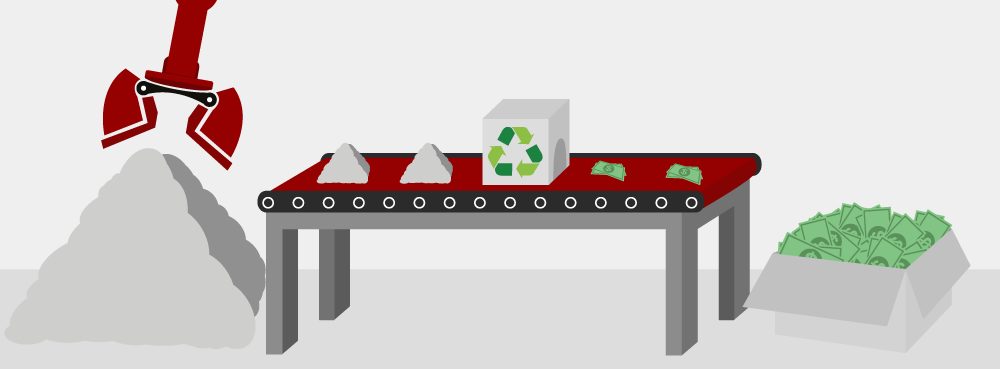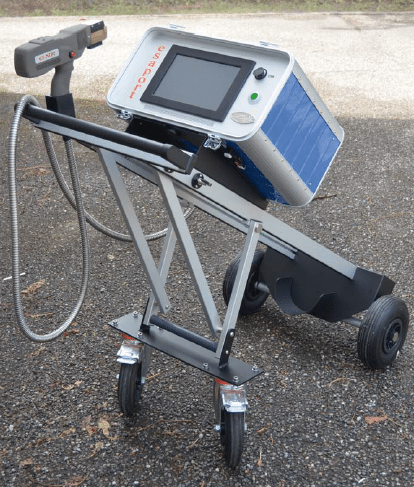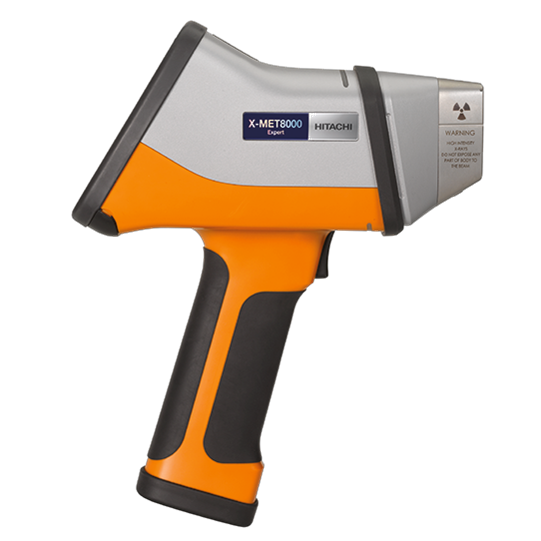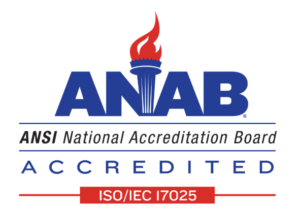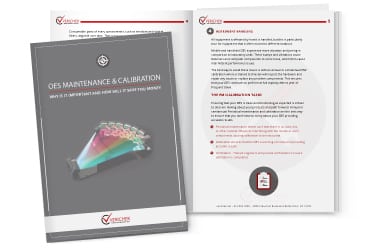You can’t turn anything you touch into gold, unless your name is King Midas. But believe it or not, you can help save the environment by turning junk into cash through scrap metal recycling.
Perhaps you’ve heard about scrap metal recycling many times before. Maybe you’ve read about it, too, but didn’t have the inclination to jump onto the recycling train. But after reading this guide, you may even feel pumped up enough to inspect your home for pieces of trash with metals in them.
Additional Reading: 5 Quick Tips For Collecting And Getting More Value Out Of Your Scrap Metal

The 5 Steps of the Scrap Metal Recycling Process
If you’re newer to scrap metal recycling, you may be wondering what goes into the process. It can be broken down into five steps: collection, separation & preparation, melting & purification, solidifying & manufacturing. Read on to learn more about each step.
#1: Collection
The first step in scrap metal recycling is collecting items that contain metals. These can be found almost anywhere, including construction sites, industrial facilities, warehouses, landfills, and even at home!
#2: Separation & Preparation
The items are then sorted at a metal recycling facility by type of material and packaged for transportation. This is typically done by shredding, shearing, and compacting.
#3: Melting & Purification
After separation, the scrap metal is melted down and purified by steel mills. This is done in order to remove any impurities from the scrap.
#4: Solidification
The metal is cooled and formed into different shapes for future use.
#5: Manufacturing
The new metal is now ready for order. It can be taken to manufacturers, where it is made into new products.
Large businesses with in-house programs and scrap yards often employ 3rd party technical services to get their towering pile of waste in order. They either send their scrap metal to the service provider or get a technician to their site to conduct PMI tests. These tests use tailored identification methods to sort different types of scrap fast.
On the other hand, business with the right knowledge and expertise may get their own machines (like metal analyzers) to sort their scrap metal.
These Tools Make Sorting Scrap Metal Quick & Accurate!
Hitachi X-Met8000 Handheld XRF Analyzer
Hitachi’s X-MET8000 handheld X-ray fluorescence (HHXRF) analyzers provides rapid and accurate chemistry of a wide array of materials such as solid and powder metals, polymers, wood, solutions, soil, ores, minerals etc.
Hitachi Vulcan Handheld Metal Analyzer
Hitachi’s Vulcan Handheld metal analyzer is one of the fastest metals analyzers available today. All you have to do is squeeze the trigger to receive results in one second. This laser analyzer was built to last, even in the toughest scrapyard conditions.
The Recycling plants will handle the harder parts of the process, including radiation detection, searing, and shredding. But you can help your local community recover more reusable materials by collecting scrap metal. The following section will show you what you need to get started.
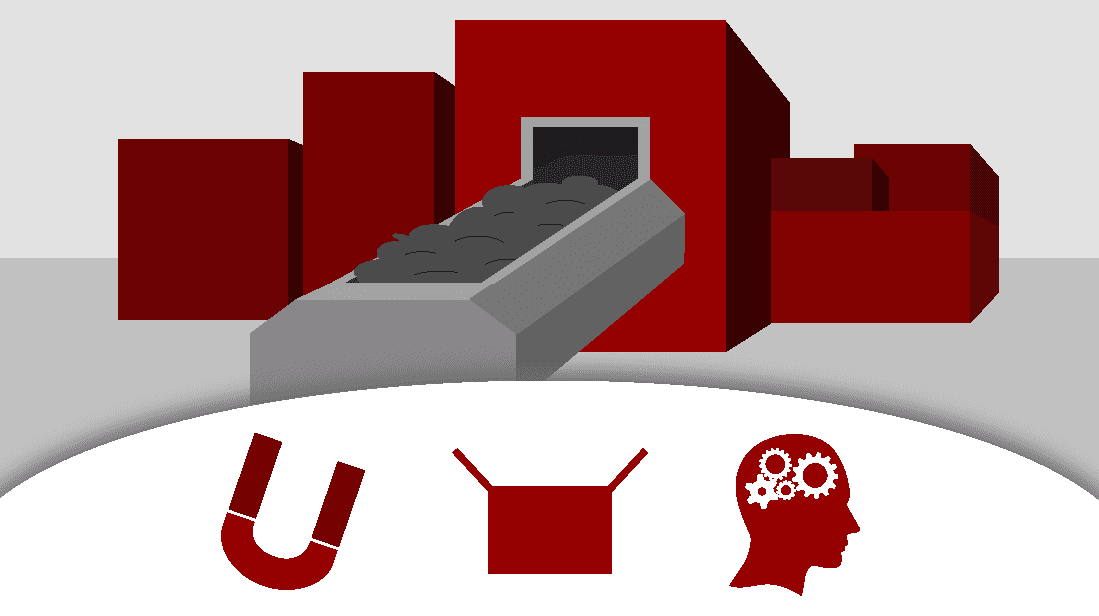
Tools Of The Trade – Getting Started in Scrap Metal Recycling
1. A Magnet For Identifying And Assessing Metal Value
A magnet is a scrapper’s best friend. You will need this tool to distinguish ferrous from nonferrous metals. Here are rules of thumb to keep in mind:
- If the magnet sticks, you have a ferrous metal. Common metals like steel and iron fall under this category. And since they’re easily available, ferrous metals won’t amount to much. Nevertheless, scrap yards still accept them for recycling and will pay you for them.
- If the magnet doesn’t stick, you have a nonferrous metal. Copper and aluminum are nonferrous, and they’re worth more than the ferrous variety for a number of reasons. They have greater resistance against corrosion, have higher conductivity, and weigh less.
Be sure to bring a handheld magnet before heading out. If you don’t have one available, the small one from the back of a fridge magnet will do just fine.
2. Containers For Sorting
Next, you want to keep a couple of containers within reach for sorting your scrap.
You want to have a container for every type of metal you collect. If you mix them together, the scrap yard will either tell you to separate the metals and come back or pay you based on the the least valuable metal in the bunch.
Here’s an example:
If you have aluminum and copper in a single container, a scrap yard will likely pay you based on the price per pound of aluminum. And you don’t want that as copper has a higher value.
Types of Recyclable Metals
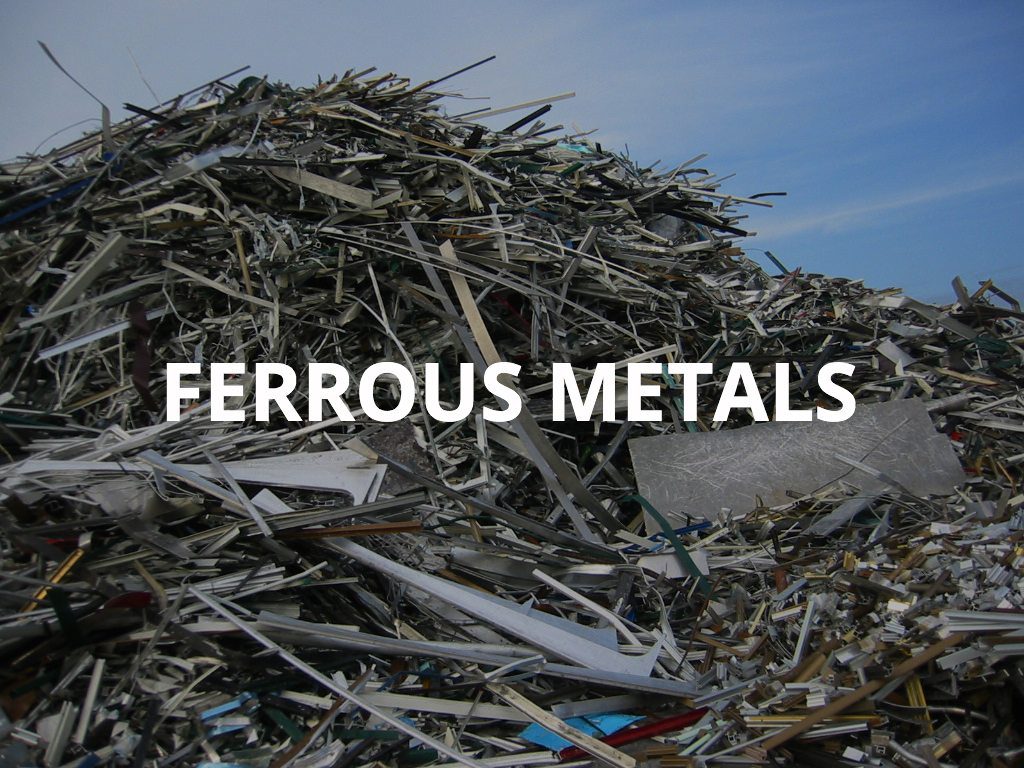
Ferrous Metals
- Steel is easy to tell apart from other materials because it will stick to a magnet like its life depends on it. It’s also one of the cheapest and heaviest metals around. While steel isn’t valued as much as the nonferrous type, you won’t run out of steel scrap as it’s found in just about anything – from old coat hangers to washing machines.
- Iron is also magnetic. Yards use magnet-fitted cranes to move iron scrap around. Iron is one of the most recycled metals on the planet partly because it is straightforward to reprocess. Some common household features like bathtubs, boilers, and washing machines pack a lot of iron in them.

Non-Ferrous Metals
- Copper is one of the most valuable metals that you can recycle, so keep an eye out for it. It has a reddish color when in good condition, but it can have a dark brown appearance when worn. You can find copper in computer cables, and power cords, and old extension cords. Old plumbing pipes, cooking pans, and electromagnets may also contain copper.
- Aluminum may look like steel, but it won’t stick to magnets like the latter. Window frames, car hoods, bicycles, and motorbikes usually contain aluminum. Oh! Those old soda and beer cans in your bin also count.
- Stainless steel contains 70% iron. But it is still considered a nonferrous metal and commands a higher price per pound. The reason? It contains, at least, 8% nickel. Appliances and kitchenware as well as some automotive and aerospace equipment contain stainless steel. As you may have expected, it looks like regular steel but is not magnetic.
- Brass is a combination of zinc and copper, often found in keys, valves, doorknobs, and faucets. This heavy metal has a yellowish color (with a touch of red), but often takes a greenish appearance when left outside for a prolonged period of time.
- Bronze is a product of numerous metals including copper, tin, manganese, zinc, aluminum, and nickel. Distinguishing it from brass and copper can be tricky, but one thing to keep in mind is that bronze is water and corrosion-resistant.
- Lead is hailed for its industrial properties including corrosion resistance and excellent malleability. But while it is pliable and soft, lead is heavy, making it a good fit for wheel weights and pipes.
Good To Know: Advanced Scrap Metal Identification Methods
Scrappers can get by with appearances. Know that other ways for identifying metals exist, many of which are a staple of an experienced metal worker’s toolbox:
- OES – An optical emissions spectrometer focuses on understanding the composition of a particular piece of metal by using a spectrometer that can determine the level of excitement in the metal’s atoms to determine what kind of metal it is. This is can be completed because different types of metals create different colors, sizes, and appearances for their sparks.
- XRF – X-ray fluorescence excites a metal sample or alloy by using a primary and secondary x-ray source and measures the fluorescent x-ray emitted from the sample, which is different depending on the chemistry or the constituent elements of the materials.
- LIBS – This method is popular in scrap analysis and uses a highly energized laser pulse to analyze metals in mere seconds.
- Spark test – This test uses a high-speed grinder to generate a stream of spark. The metal worker inspects the color, length, and form of the spark to identify the metal.
- Rockwell test – Using a testing machine with a cone-shaped point, the Rockwell test looks at a material’s hardness to distinguish the type. The downside, however, is it only considers only one of metal’s many properties.
If you want to learn more about other techniques and their pros and cons, our post about the most common metal identification methods will give you an introduction.
Recycled Scrap Metal Prices And Value
At the end of the day, the scrap yard will decide how much they’ll pay you for whatever type of metal you bring. The table below will give you a better idea of which metals give the best return on your effort.
These figures change daily and can differ depending on a number of factors, including location, market trends, and meta; grade. If you want to get real-time prices, check out the Scrap Register and Scrap Monster.
| Metal Type | Price |
|---|---|
| Steel | $0.50 to $1.30 |
| Aluminum | $0.65 to $1.07 |
| Copper | $2.13 to $2.43 |
| Stainless Steel | $0.32 to $1.64 |
| Brass | $1.59 to $1.76 |
| Lead | $0.41 to $0.73 |

Safety Guidelines To Keep In Mind While Scrapping
Safety is a primary concern wherever you work, but even more so when collecting scrap for recycling. This holds true even if you don’t plan on taking it up as a full-time job. You will have to lift heavy stuff and handle sharp objects and edges. Not to mention you need to keep watch of those around you and be careful not to injure bystanders or damage properties.
Dress For The Job
As a rule, you want to expose as little of your skin as possible. Don’t go out there wearing shorts, flipflops, and a sando. Save that for the beach. Instead, wear puncture-resistant long-sleeves and pants to minimize the risk of cutting yourself.
Throw in a pair of quality work boots for good measure. You want ones that are comfortable and have alloy safety toes for lightweight protection against heavy debris.
Aside from your skin, you also want to shield your eyes and head from the elements so wear eye goggles and a helmet. Oh! And keep those hands safe from scrapes with a pair of leather work gloves.
Bring A First-Aid Kit
Accidents can still happen even if you’re wearing the finest protective gear you can afford. So be smart and bring a first aid kit. The kit should contain the usual bandaids and bandages plus more including:
- Tweezers for pulling out splinters
- Topical antibiotic for wounds
- A bottle of water
- Pain relievers (works great for backaches, too)
- Anti-allergy medicine like antihistamines
Don’t forget to bring a cellphone, too. In case of a serious injury, having one lets you call for help quickly. Better still, have the emergency services or a relative on speed dial so you won’t have to fumble for the right phone number.
Have The Right Equipment For The Job
In your search for valuable metal scraps, you may need to climb high places, bring down heavy stuff from the roof, or demolish parts of an old abandoned house. Whatever you need to do, make sure you have the right equipment for the job, whether it’s a ladder, a sledgehammer, or a long rope.
Speaking of ropes, you want to bring more of those.
You will need ropes or chains for keeping your metals in place, especially when you’re on the go. Doing so helps prevent injuring people or damaging cars right behind you. Securing your scrap can also deter thieves – or give them a hard time at least (more on this later).
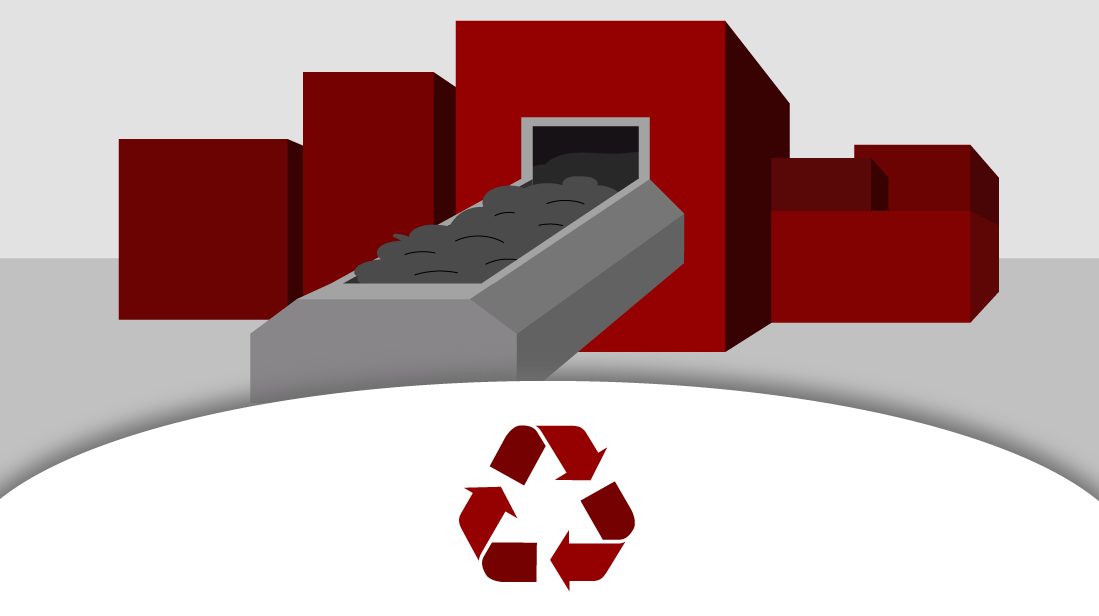
The Benefits Of Recycling Scrap Metal

Reduces The Need For Mining
Mining is invasive. To extract raw materials from the earth, mining companies employ heavy excavators, haul trucks, and men with shovels to dig into the ground. This rabid digging not only destroys the soil but it also releases toxic compounds, radioactive rocks, metallic dust, and asbestos-like minerals into the air and water.
The harsh environmental impacts of mining are many. The list includes:
- Sinkhole formation
- Soil, groundwater, and surface water contamination
- Hazardous byproducts, including wastewater
- Destruction of wildlife habitat
- And the loss of biodiversity, to name a few
The impact extends far wider than the mining site itself and continues decades after the mining activity is done.
On the other hand, shutting down mining can prove devastating, too. It’s a global $496-billion-industry, with the livelihood of millions depending on it. Moreover, sectors around the world – especially high-tech industries – rely on metals and rare earths to survive.
While banishing mining is impossible, reducing the need for it is within reach. Recycling scrap metal is a step in the right direction. If the world recycles enough scrap metal, the demand for virgin materials will decrease, and mining activity will follow.
However, we’re still miles away from that goal.
The Recycling Rates of Metals: A Status Report from the International Resource Panel found that the recycling rate for metals is low. On paper, recovering metals over and over again is more than doable. Yet less than 33% of the 60 metals included in the report have over 50% recycling rate, with about another third having less than 1% recycling rate.
Conserve Energy And Natural Resources
Plants need to process newly extracted materials and metals before they’re market-ready, which puts additional strain on our environment. Repurposing scrap metal into new products requires significantly fewer natural resources and less energy.
For example, recycling a ton of steel conserves 2,500 lbs of iron ore, 1,400 lbs of coal, and 120 lbs of limestone, says the American Iron and Steel Institute. Not to mention it saves enough electricity to power 18 million households for a year.
On the other hand, recovering a ton of aluminum cans saves 21,000-kilowatt hours. Recycling reduces the need to mine virgin bauxite, leading to 95% energy savings.
Boosts The Country’s Economy (And Yours Too)
While not as massive as the mining industry, recycling scrap metal is a potent booster for the economy. In the US, the metal recycling industry generated over $64 billion in 2020 and recovered $40 billion worth of nonferrous metals like aluminum, copper, and lead.
Remember. We are yet to recycle enough. If we can bump up the recovery rates for different metals, the economic advantages will also grow. The financial incentives afforded by metal recycling can extend to you, too.
Find a Local Scrap Metal Yard and Get Started!
Without local scrap yards, scrap metal recyclers would have nowhere to take their junk to and exchange it for cash. Compile a list of metal scrap yards in your area. Start by looking at your state government website. Chances are, you’ll find a directory of recycling locations and scrap buyers, which you can narrow down.
On the other hand, you can also use tools like the iScrap App. This lists current metal prices, scrap yards, and metal recyclers in the US and Canada. You can also use an online nationwide directory like Earth911 to aid you in your search.
